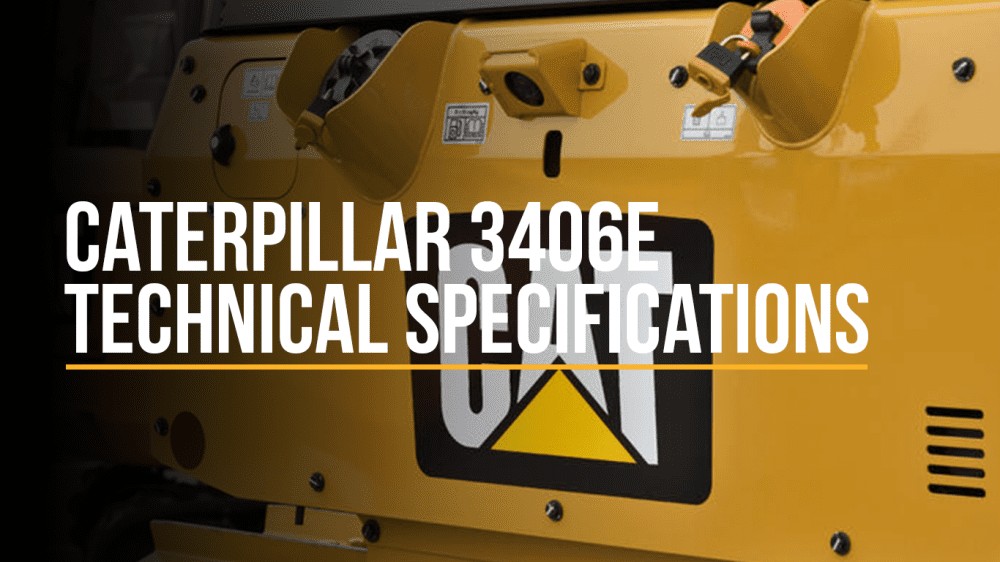The Caterpillar 3406E, a powerful and reliable diesel engine, has left its mark on the heavy-duty truck industry. This guide dives deep into the 2ws Cat Engine Specs, covering its history, common issues, performance enhancements, and key specifications.
Caterpillar 3406E: A Legacy of Power
Produced from 1993 to 1999, the 3406E was the last in the 3406 series and the first successful fully electronic engine from Caterpillar. This pre-emissions engine, renowned for its reliability and robust performance, quickly became a favorite among truckers and mechanics. Predominantly found in Peterbilt and Freightliner trucks, the 3406E offered a blend of classic mechanical durability and the advantages of electronic control. Although outlawed in California due to emissions regulations, it remains a popular choice in other regions. Let’s delve into the specifics of this iconic engine.
Understanding the 2WS Cat Engine Serial Number Prefix
The 2WS prefix is one of several Engine Serial Number (ESN) prefixes used to identify specific Caterpillar 3406E engines. While this guide focuses on the general specifications of the 3406E, understanding the ESN prefix is crucial for accurate parts identification and maintenance. Each prefix signifies unique engine configurations and potential variations in specifications. Consulting Caterpillar’s official documentation or a qualified technician is recommended for detailed information related to the 2WS prefix.
Caterpillar 3406E Common Issues
Despite its robust design, the 3406E had some known issues. Engines with the 5EK engine serial number suffered from crankshaft breakage, often at journals 1 and 6. Caterpillar addressed this issue on a case-by-case basis. Oil leaks were another common problem, particularly from the rear structures and flywheel housing, often due to flimsy gaskets. Later models, like the C15, resolved this with improved seals and block design. Other problems included:
- Injector issues, especially with the fuel return line.
- Camshaft and camshaft sensor problems.
- Oil cooler failures.
- Exhaust manifold cracking.
Aftermarket Enhancements for the 3406E
Aftermarket companies have stepped in to improve upon the original 3406E design. Forged steel crown pistons, stronger and more reliable than cast parts, offer enhanced durability. Pin and roller kits provide a cost-effective alternative to replacing the entire rocker arm when wear occurs. These enhancements address some of the engine’s weaknesses and provide cost savings for owners.
2WS Cat Engine Specs: Technical Specifications
Here are the key specifications for the Caterpillar 3406E engine:
- Fuel: Diesel
- Cubic Inch Displacement: 893
- Cylinder Bore Diameter: 5.400-5.402″ (137.16-137.211 MM)
- Stroke: 6.500″ (165.1 MM)
- Cylinder Configuration: Inline 6 (L6)
- Engine Comments: 3406E truck, Overhead Cam (OHC), 24 Valve
Caterpillar 3406E Serial and Casting Numbers
Referencing the correct serial and casting numbers is essential for identifying and ordering the right parts for your 3406E.
ESN Prefixes: 1LW, 2WS, 5DS, 5EK, 6TS
Casting Numbers:
- Camshaft: 152-7648, 136-7329
- Crankshaft: 4P9121
- Flywheel: 4W6707, 7N9146
- Head: 4P1599
- Connecting Rods: 9Y6048, 6N3911, 7E5996, 8N1726, 9Y6054, 1608178, 7N3229, 8N1728
Conclusion: The Enduring Power of the 3406E
The Caterpillar 3406E, with its robust design and impressive power, remains a significant engine in the heavy-duty truck market. Understanding the 2WS Cat engine specs and its potential issues is crucial for owners and operators. While newer engines have replaced the 3406E, its legacy of performance and reliability continues to influence the industry.

